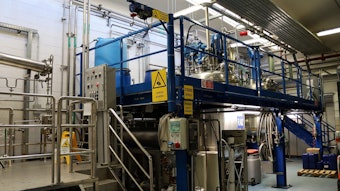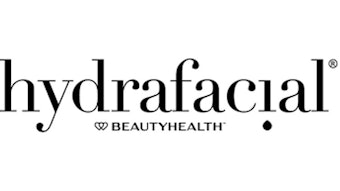Logistics management and supply chain strategy is an integral part of your business that can allow you to maximize spending, drive down costs and efficiently service your retailer base. However, it also has the risk of draining your capital and monopolizing your business’ resources. To further complicate supply chain planning, there are now numerous responsible choices that can cut your carbon emissions. So how can you dependably and rapidly deliver your goods cheaper while “going green?”
There are multiple levels of logistics complexity, depending on the size and stage of your business. Your logistics strategy will fit into one of a number of proven options, and, with successful implementation, could evolve from one solution to another.
Evaluating Needs and Performance
Small businesses are prone to the “truck for cheap” syndrome—making rapid business decisions based solely on price. Midsize businesses must consider more complex infrastructures, and they often neglect consideration of nontraditional options or cutting-edge practices.
For smaller businesses, logistics needs might revolve around frequent parcel shipments via FedEx and UPS, the occasional pallet to major retailers and the trade show booth to the next expo. Though they may be small, they are also at an advantage. By planning ahead, an entire supply chain could be mapped to build a solid foundation from the start—avoiding the mistakes that come with hasty growth.
Likely, small businesses primarily interface with carriers, so the most proactive step is tracking and managing these carriers’ quality—creating a matrix of score cards, if several are involved. Develop relationships now and set up a comprehensive way to measure carrier performance. Rate delivery costs, on-time performance, customer service, ease of claims processing (it is inevitable) and overall shipment transaction. It could be as simple as creating a check box hand stamp or as sophisticated as entries in a tracking system.
To keep emissions in check, introduce an additional set of data that measures carriers’ sustainable characteristics. These could include smaller details such as idling system adjustments, speed policies, running on solar energy at rest, alternative fuel usage, and so forth. A more uniform measurement would be, for example, the U.S. Environmental Protection Agency’s Smartway certification, an independent agency award that tracks carriers’ promises for sustainable improvements through a multi-year period (www.epa.gov/smartway offers information about individual requirements).
When you cross-reference your carrier performance scoring with your sustainable scoring, you’ll easily identify carriers that meet your performance standards, budget and eco goals. This matrix will be especially useful when you need a full solution provider, one possessing a combination of warehousing and transportation, and evaluating past services is the perfect way to start your research.
Finding Full Solution Providers
Many midsize companies leave the supply chain planning to the “warehouse guy” or the “shipping person.” This thinking forces a company to react to spikes in demand instead of acting off business needs.
Tethering revenue to consumer buying leaves your bottom line vulnerable. Proper logistics planning should involve executives across multiple departments—including sales, product development, customer service, shipping and accounting. Your unique needs, when communicated accurately to the provider in consideration of your business, will only be met with cross-departmental integrations. For example, the logistics manager might not know that customer service is overwhelmed with creating shipping status reports for retailers. Providers that create automated reports or even allow third-party portal access might alleviate financial or labor strains.
The next step is evaluating current capabilities and measuring them against anticipated growth and future needs. If you are currently shipping parcel and full pallets, plan for a provider that could also handle your foray into mixed pallets, labeling, display building, and pick and pack.
Examine your future warehousing needs. Consider providers that offer a high level of item picking. Most drug/beauty stores and mass retailers will order lower numbers of multiple SKUs to be delivered directly to the store. The mixed box of SKUs will need to be handpicked by an efficient staff with experience in small item packaging. Warehouses utilizing finger- and wrist-scanners will be the most up-to-date with technology—often showing a faster picking rate.
Also, consider whether your product can be repackaged for seasonal sell or if it may need additional upgraded parts. Finding a provider with expertise in building and staging assembly will reduce outsourcing costs. The most effective teams are well-trained and can easily provide an accurate quote based on their average speed of labor. Those that can provide special handling and value-added services—kitting, ticketing, assembly, display building, etc.—will also allow you to work with multiple retailer-specific policies without missing a beat. This was especially essential for Rock and Republic’s launch of its Rock Cosmetics line to high-end retailers, including Bloomingdale’s and Harrods. The brand’s products required delicate handing by assembly staff wearing smudge-proof gloves for a blemish-free finish.
Programs to Enhance Your Business
Retailer-driven consolidation programs are the best ways for midsize to large businesses to enhance an already established supply chain. While other types of consolidation rely on timing and depend on outside orders, retailer-driven consolidation programs pool a group of manufacturers headed to the same retailer into one single purchase order, maximizing each truckload. By combining orders, the logistics provider can then deliver a full truckload headed to a single distribution center rather than shipping multiple LTLs, thereby reducing costs and delivery times. Retailer-driven consolidation, by-design, is a sustainable strategy—taking trucks off the road, lowering carbon emissions and eliminating wasteful practices such as partially empty trucks Advanced Beauty Systems (ABS), which manufactures a full line of beauty products, has opted for a logistics infrastructure that hinges on the cost and sustainability benefits of participating in a consolidation program. During the past year, its business has seen a surge in growth, and in 2008, responded to a demand from the European market. ABS is able to meet that demand by participating in a consolidation program with Wal-Mart that is especially accommodating to smaller-load, higher-frequency order practices and able to easily expand to higher-loads from order to order. This type of flexibility to order volume, as well as the allowance for shipping smaller orders, allows ABS’ growing enterprises to stay nimble. To meet additional growth, the provider has begun a program to deliver ABS product via container load aboard.
Additionally, by participating in the program, ABS has recognized cost savings of up to 34 cents per case (1 cent per unit). The program thrives on efficiencies, delivering reduced transit times as well as an increase in ‘must arrive by’ dates, and afforded a CO2 emissions reduction of more than 11 million pounds per year.
Savvy manufacturers and marketers may be well-dialed into the sustainability movement sweeping across industries. The next step for these companies is growing revenue by choosing sustainable solution providers that cut costs and allow ongoing growth.
Sum-Sum Chan is the director of marketing and communications at CaseStack, a sustainability-focused logistics company, overseeing the to-market strategy and brand building. She previously held the position of marketing director at Hint Mint, a gourmet confectionary company. www.casestack.com; [email protected]










